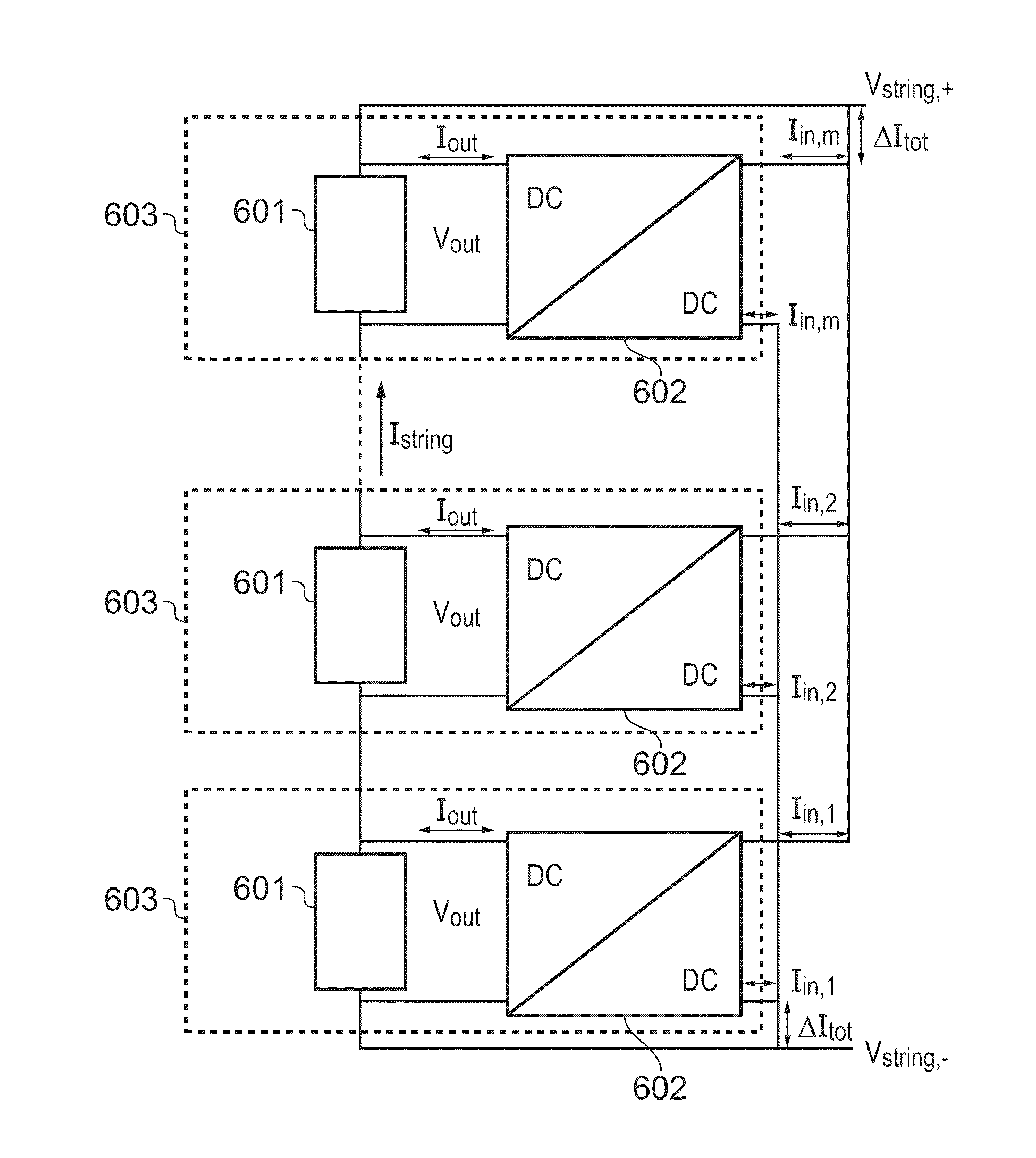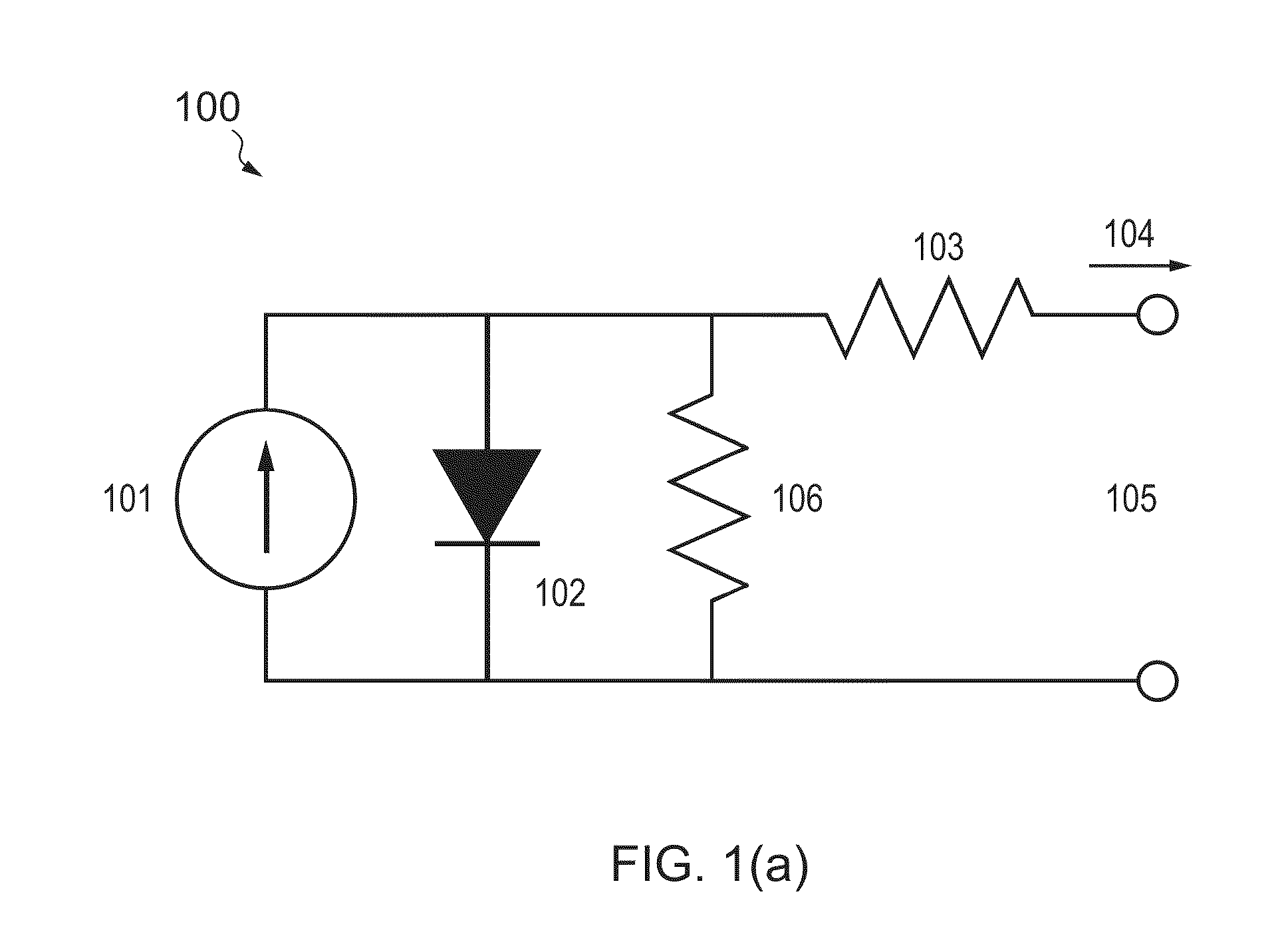Photovoltaic unit, a dc-dc converter therefor, and a method of operating the same
- Summary
- Abstract
- Description
- Claims
- Application Information
AI Technical Summary
Benefits of technology
Problems solved by technology
Method used
Image
Examples
Embodiment Construction
[0043]FIG. 1 shows the equivalent circuit 100 which is most often used to model the performance of a solar cell (the so-called single-diode model). A current source 101 corresponding to the photo-generated current (also referred to hereinafter as insolation current) Iins is in parallel with a diode 102 and shunt (that is, parallel) resistance Rp at 106. That part of Iins which does not flow through the diode or shunt resistance flows to an output node via the low-ohmic series resistance Rs 103 (typically a few mΩ per cell). Some internal leakage occurs via the high-ohmic shunt resistance Rp (typically in a kΩ to MΩ range).
[0044]Its accompanying I-V characteristic is shown in FIG. 1b, for the case where the photo-generated current Iins is zero (curve 1) corresponding to no irradiation, and non-zero (curve 2) corresponding to an irradiated cell. As shown in the un-irradiated case, the IV characteristic is that of a diode with shunt and series resistances, and lies in the first and thi...
PUM
 Login to View More
Login to View More Abstract
Description
Claims
Application Information
 Login to View More
Login to View More - R&D
- Intellectual Property
- Life Sciences
- Materials
- Tech Scout
- Unparalleled Data Quality
- Higher Quality Content
- 60% Fewer Hallucinations
Browse by: Latest US Patents, China's latest patents, Technical Efficacy Thesaurus, Application Domain, Technology Topic, Popular Technical Reports.
© 2025 PatSnap. All rights reserved.Legal|Privacy policy|Modern Slavery Act Transparency Statement|Sitemap|About US| Contact US: help@patsnap.com



